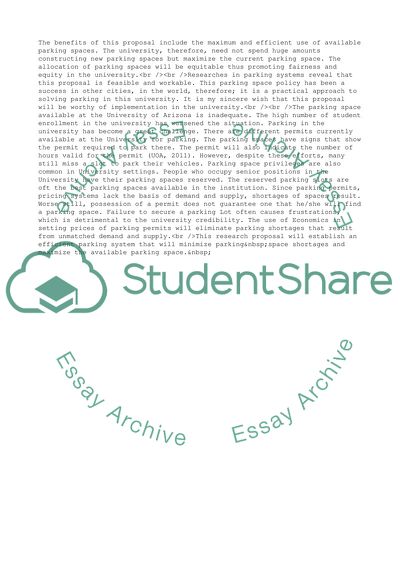Cite this document
(A Proposal to Adopt Economic Approach to Allocate Parking Spaces Report Example | Topics and Well Written Essays - 1750 words - 1, n.d.)
A Proposal to Adopt Economic Approach to Allocate Parking Spaces Report Example | Topics and Well Written Essays - 1750 words - 1. https://studentshare.org/management/1641139-proposal-argument
A Proposal to Adopt Economic Approach to Allocate Parking Spaces Report Example | Topics and Well Written Essays - 1750 words - 1. https://studentshare.org/management/1641139-proposal-argument
(A Proposal to Adopt Economic Approach to Allocate Parking Spaces Report Example | Topics and Well Written Essays - 1750 Words - 1)
A Proposal to Adopt Economic Approach to Allocate Parking Spaces Report Example | Topics and Well Written Essays - 1750 Words - 1. https://studentshare.org/management/1641139-proposal-argument.
A Proposal to Adopt Economic Approach to Allocate Parking Spaces Report Example | Topics and Well Written Essays - 1750 Words - 1. https://studentshare.org/management/1641139-proposal-argument.
“A Proposal to Adopt Economic Approach to Allocate Parking Spaces Report Example | Topics and Well Written Essays - 1750 Words - 1”. https://studentshare.org/management/1641139-proposal-argument.


